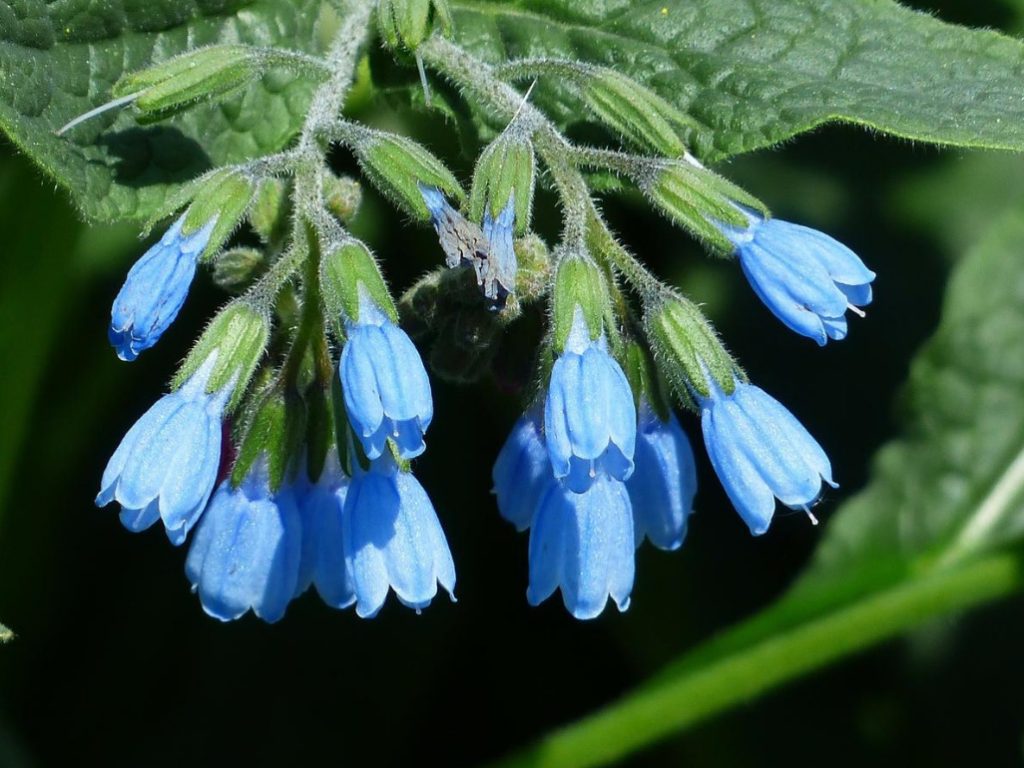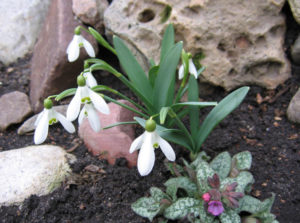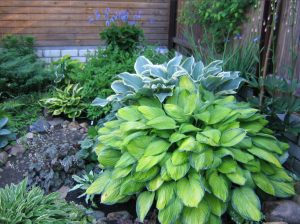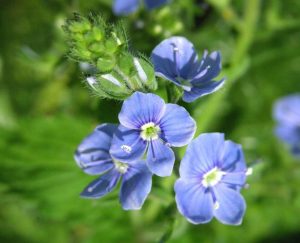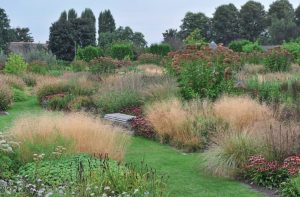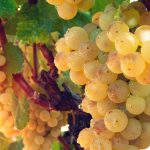Comfrey (Symphytum) is not a garden favorite. They often grow up somehow by themselves. And naturalized immigrants come to the sites from the side of meadows and wasteland to join the culture.
Gardening manuals recommend cutting these powerful plants for compost several times over the summer for other garden residents, fellow plants they have grown up with. Comfrey is used as mulch, buried in the ground or soaked in a barrel for liquid fertilizer. But if you want to look at them all season, starting in June, you will see a gradual unwinding and stretching of inflorescences-whorls that can create an unexpectedly interesting pattern.
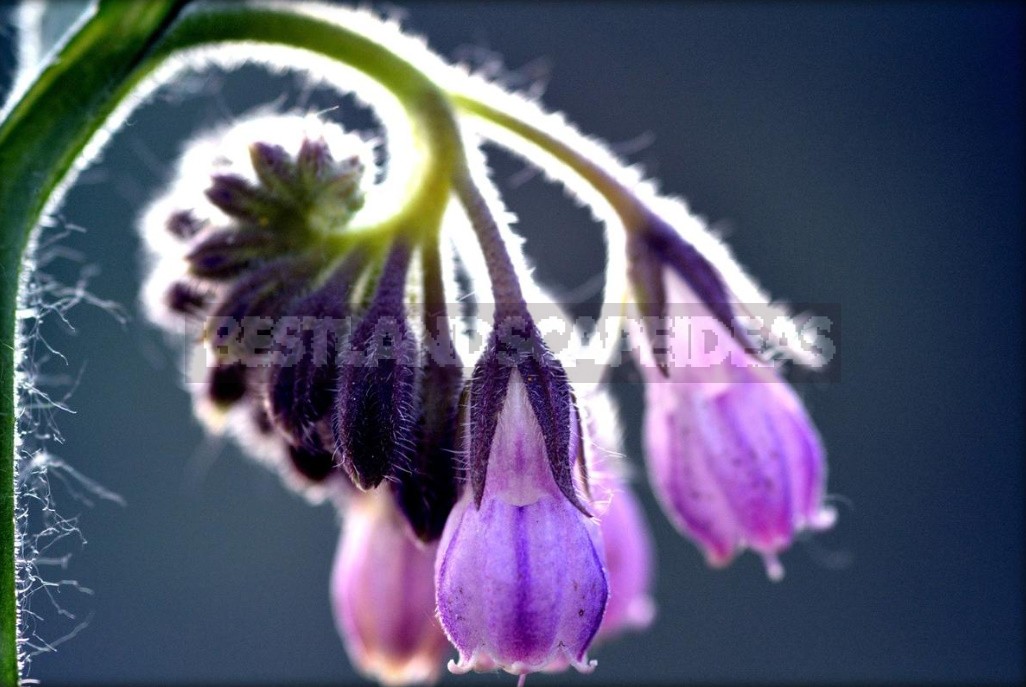
As well as the development of abundant powdery mildew in July. Comfrey got into the habit of planting in the city, and these terrible thickets of diseased plants can be seen in many home-made flower beds.
In the eyes of most gardeners, it is these species that create the image of the entire genus. They are bulky, unshaven, their inconspicuous flowers are lost in the mass of greenery. But still, can the rank and file to become a decoration? If you break away from the stereotype and consider them in all their species diversity, you can see something good in each of them.
Common types of comfrey
S. officinale-about 1 m tall, rather rough and rough, recognizable by the long wings that run down the stem from the bases of the leaves. Swirled flowers change color as they develop from reddish to bluish-purple — a property characteristic of many Boraginaceae, whose flowers are tinged with anthocyanin.
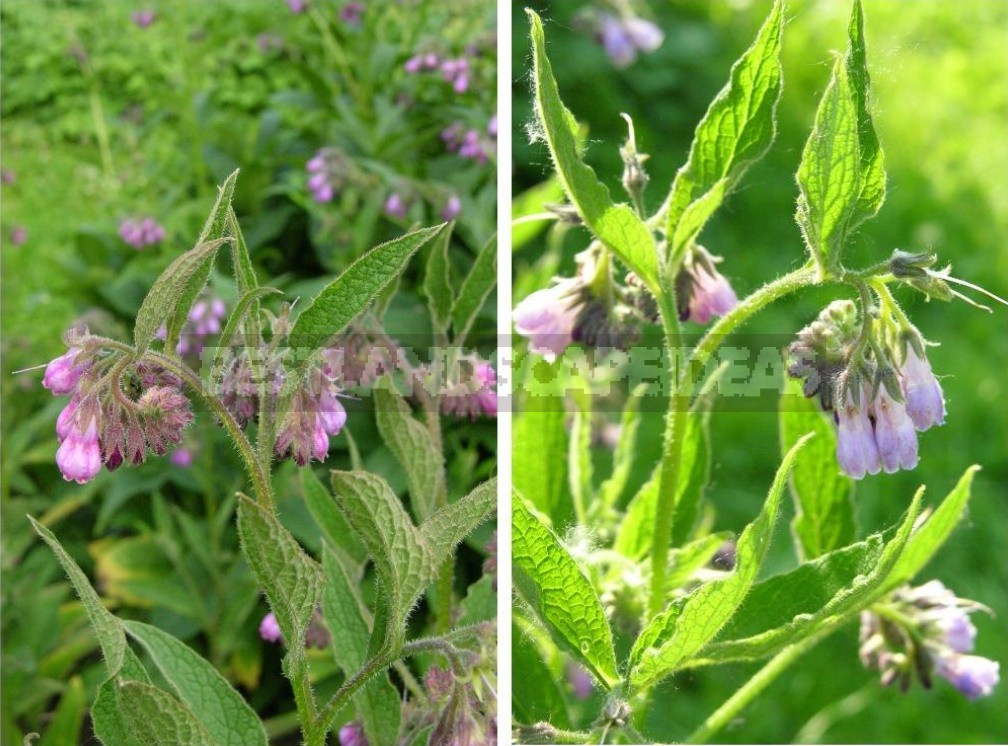
It can be found in damp meadows and light forests, often in river floodplains throughout Europe, except for the Arctic regions, in Western Siberia, Central Asia. It usually blooms in may-July, and after mowing-at any time.
Another comfrey is S. asperum = S. peregrinum. An even more powerful and bristly plant, distinguished by blue flowers and the absence of wings. It has secured a wide range due to its satisfactory feeding qualities.

At one time it was widely bred in Western Europe, but now it is inferior in popularity to its hybrid descendant-S. x uplandicum = S. officinale x S. asperum, which is obtained not only in nature, but also in places of naturalization of S. asperum.
The hybrid is similar to both parents – with dense pubescence, but almost without wings and with bluish-lilac, white, purple flowers of variable color. It is called the Russian comfrey.
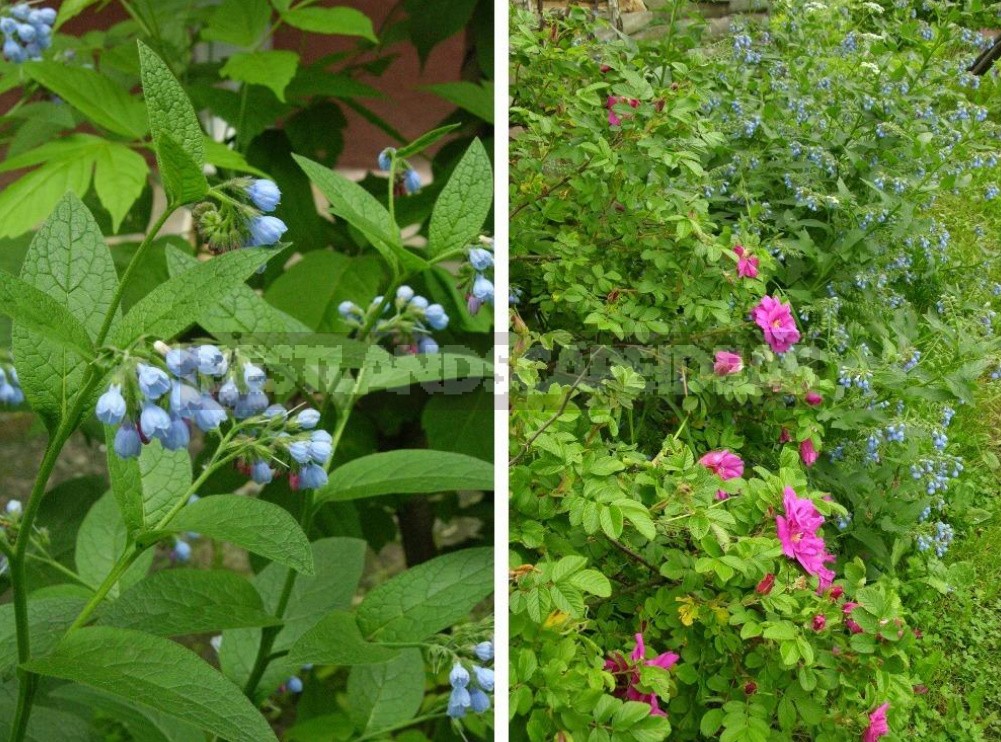
S. caucasicum is generally more decorative, although its main advantage is the same sky-blue corollas. But it is less powerful, not bristly, but rather stiffly-furry-downy; its stem is decorated with weakly descending wings. Bred once as a garden plant, began to weed and populate vacant lots and garbage dumps.
S. orientale is an inhabitant of the damp forests of southern Europe. Quite tall and erect, with a taproot, strongly branched and covered with soft hairs. There are no wings, but there are abundant whitish (cream) flowers in long whorls.
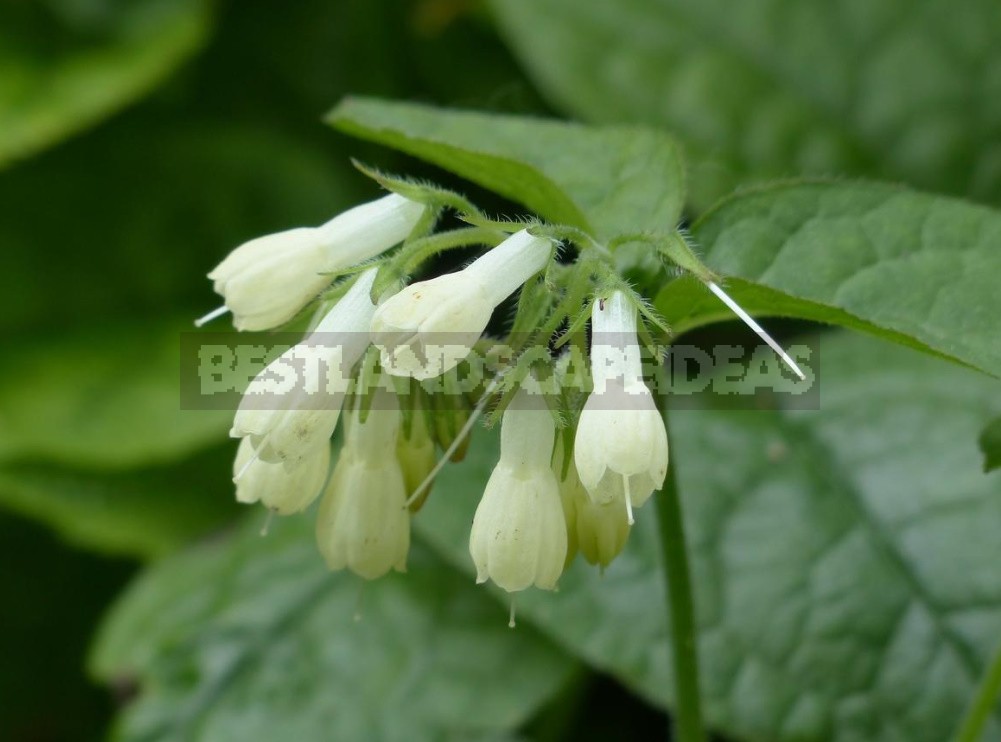
S. tauricum with a partially coinciding range differs from the Eastern one mainly by more yellow corollas and is considered a monocarpic. In the same style, comfrey trees inhabiting the forests of southern Europe, up to the Carpathians and Turkey, are designed; they differ in low-lying leaves and brighter yellowish flowers.
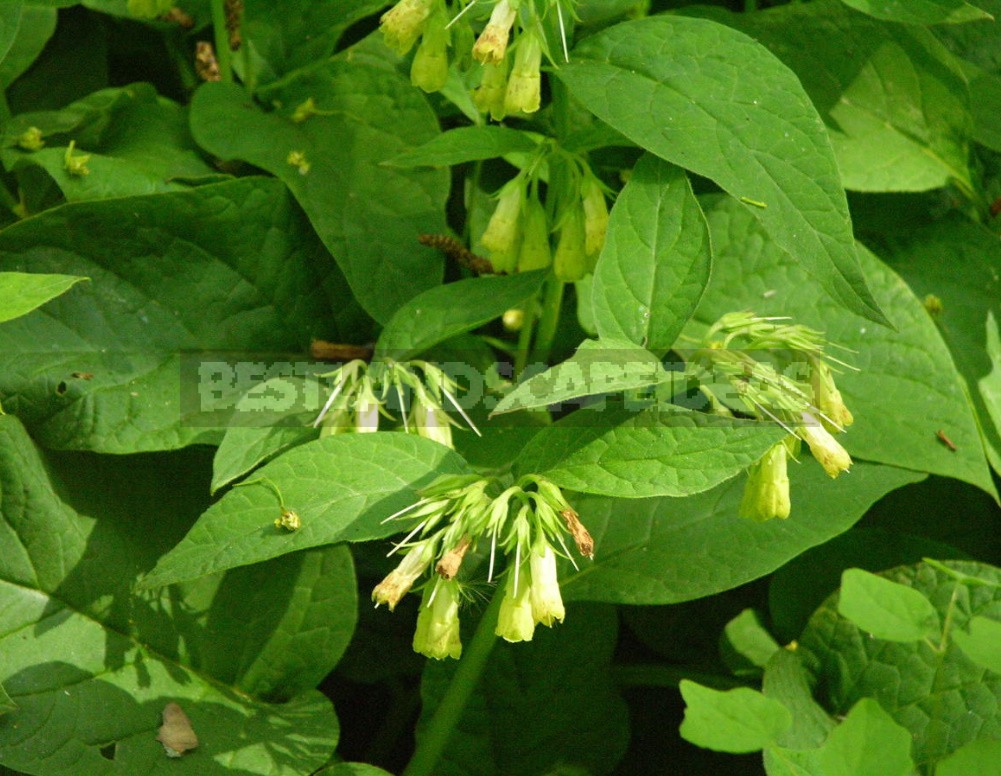
S. cordatum is well recognized due to its large heart-shaped basal leaves, which form a solid carpet above the ground. S. tuberosum lacks this decoration, but replaces it with abundant elliptical stem leaves. These plants are ephemeroids that leave the earth’s surface in the second half of summer.
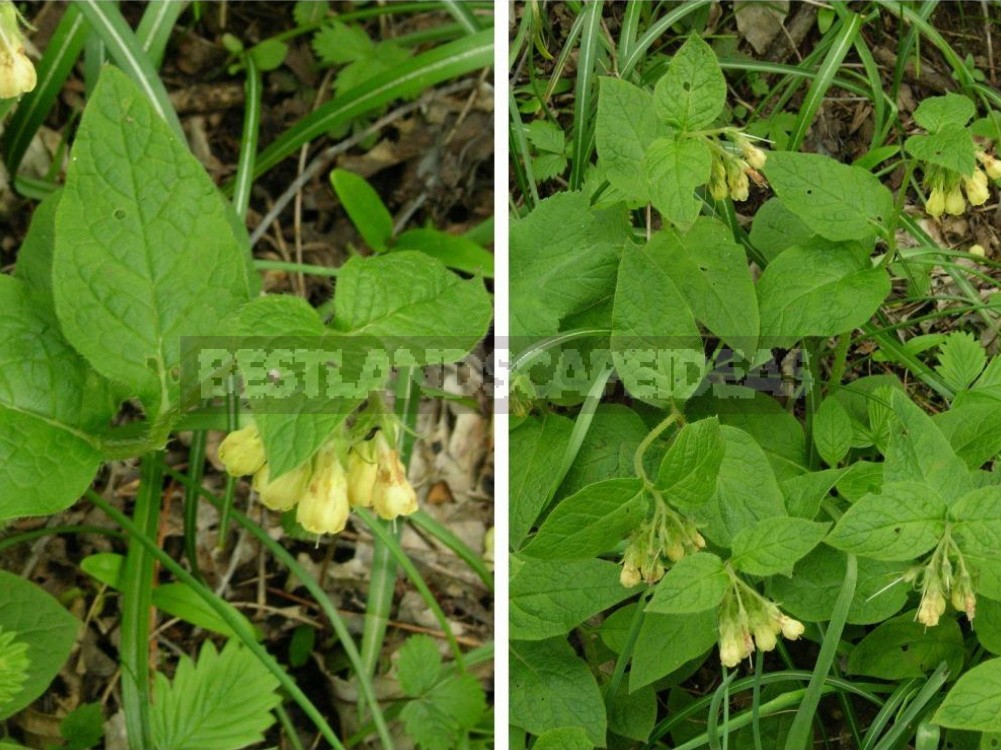
A dark history occurred when a small comfrey was introduced to the culture from the black sea regions of the Caucasus and North-Eastern Turkey, where it lives in shady forests. It is called S. grandiflorum = S. ibericum. According to the description, this comfrey should have a spreading branched rhizome and a semi-spreading wingless stem that is able to take root additionally. Stem leaves do not run down and do not form wings, basal — wide, ovate; bonus – reddish buds and pale yellow flowers in short inflorescences. However, under this name, plants of a wide variety of styles and colors can be offered, but not yellow.
Decorative varieties of comfrey
The genus is not very large-several dozen species have been described, half of which do not deserve independence, but clearly something has not been done with the classification. For example, it is not possible to identify a plant brought directly from the Caucasus. High, sprawling, with pinkish-lilac flowers and silver highlights on the leaves.
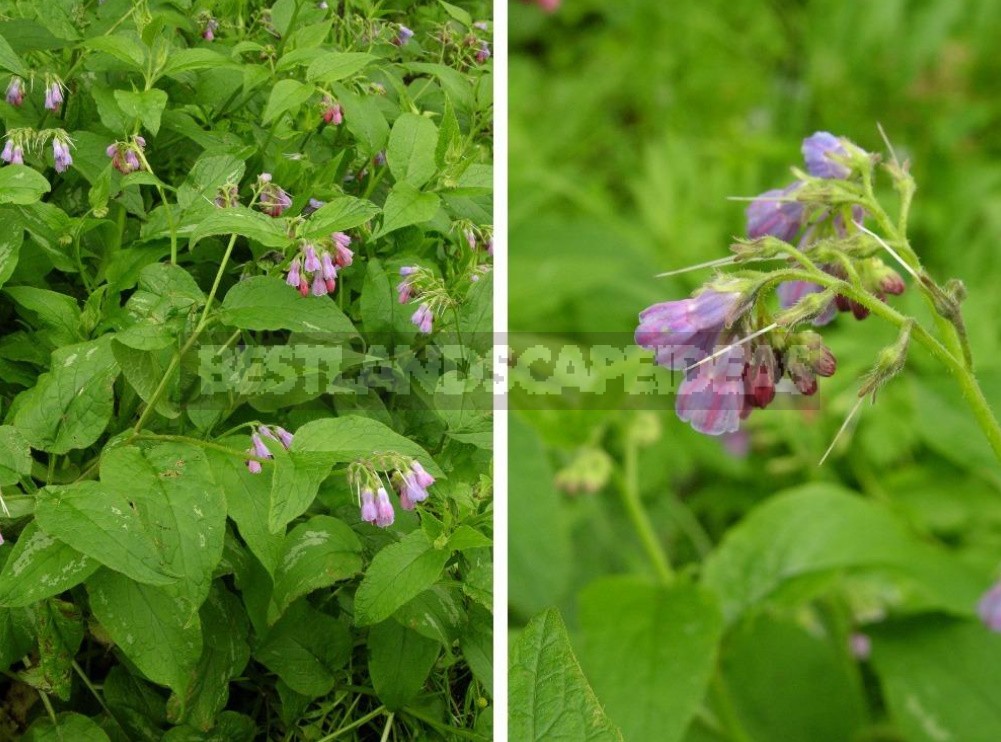
Something similar is listed in catalogues as Symphytum caucasicum ‘Azureum’. What to say about varieties that often have a hybrid origin. When a lot of different comfrey grow together for a long time, they get great hybrids, and they can sow such that no florist will understand.
There are quite a few varieties of such uncertain origin, but they often have a very narrow distribution. Perhaps this is the result of speculation based on the property of comfrey to change the color of the Corolla. Usually, the varieties are neat compact plants of small growth and various colors, automatically entered into the varieties Symphytum grandiflorum.
Such is the small brood of Hidcote, named after the famous English garden, although these plants are more suited to the combination of S. asperum x S. grandiflorum x S. officinale – they really have a little of each.

In ‘Hidcote Blue’ purple buds open whitish flowers. ‘Hidcote Pink’ similarly changes color from pink to pale lilac. In ‘Roseum’ and ‘Langthorns Pink’, which do not differ in descriptions, the flowers turn from pink to white. The origin of ‘Blaueglocken’ (S. grandiflorum ‘Blue Bells’, S. ibericum ‘Blaueglocken’) with blue corollas and reddish calyces is also unclear. ‘Rubrum’ with bright purple-crimson flowers, it is listed as a hybrid of Symphytum officinale and Symphytum grandiflorum.

There is a lot of confusion among the variegated varieties. The same group of Hidcote belongs to a semi-deciduous variety with pale lilac flowers and egg-shaped leaves, unevenly covered with cream spots, especially on the edges – ‘Hidcote Variegatum’ (‘Jubilee’), we have it better known as ‘Goldsmith’.
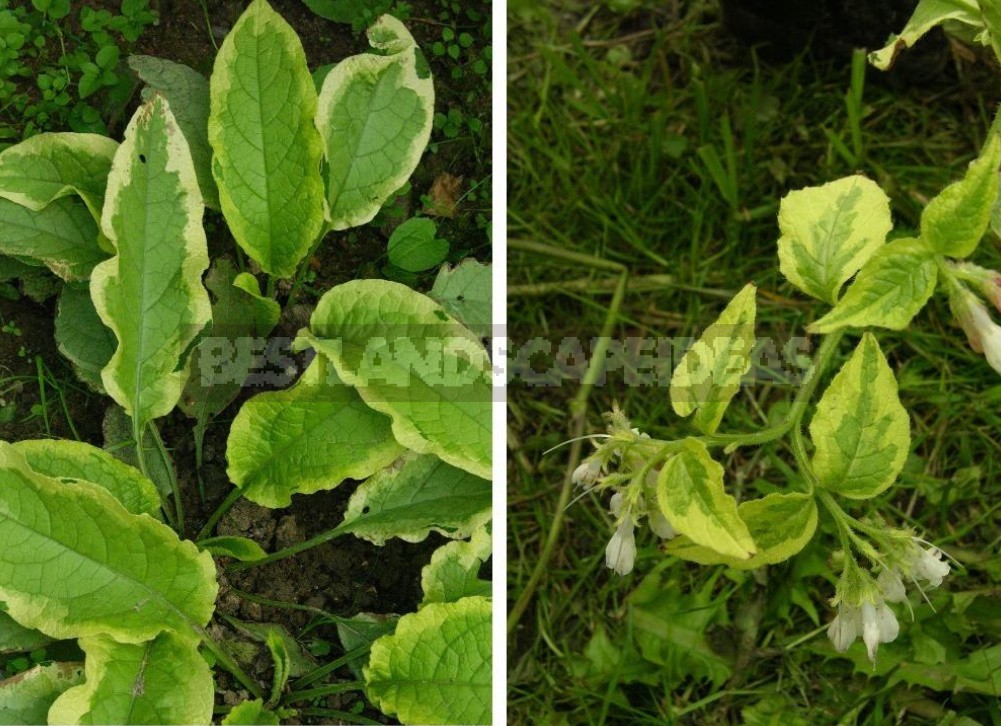
However, it is often offered as a variety of Symphytum x uplandicum, which has its own variegated generation-the variety ‘Variegatum’, and when compared they differ clearly. The latter is more erect and rigid with narrow, almost lanceolate leaves, decorated with a smooth cream border, lilac flowers. Perhaps the same is true for ‘Axminster Gold’ with a yellow border. Yellow or cream-a small difference.
‘Allgold’ – a new variety, traditionally attributed to Symphytum grandiflorum, in the spring produces leaves of a primrose-yellow color. Developing, they can reach a length of 60 cm and turn green. According to the descriptions, ‘Lambrooke Sunrise’ and ‘Belsay Gold’ are about the same.
Comfrey in the garden
The content of comfrey usually does not cause problems: sun or partial shade, good soil, watering in drought, so that the leaves do not wilt. Shade-tolerant forest comfrey-Symphytum cordatum and Symphytum tuberosum.
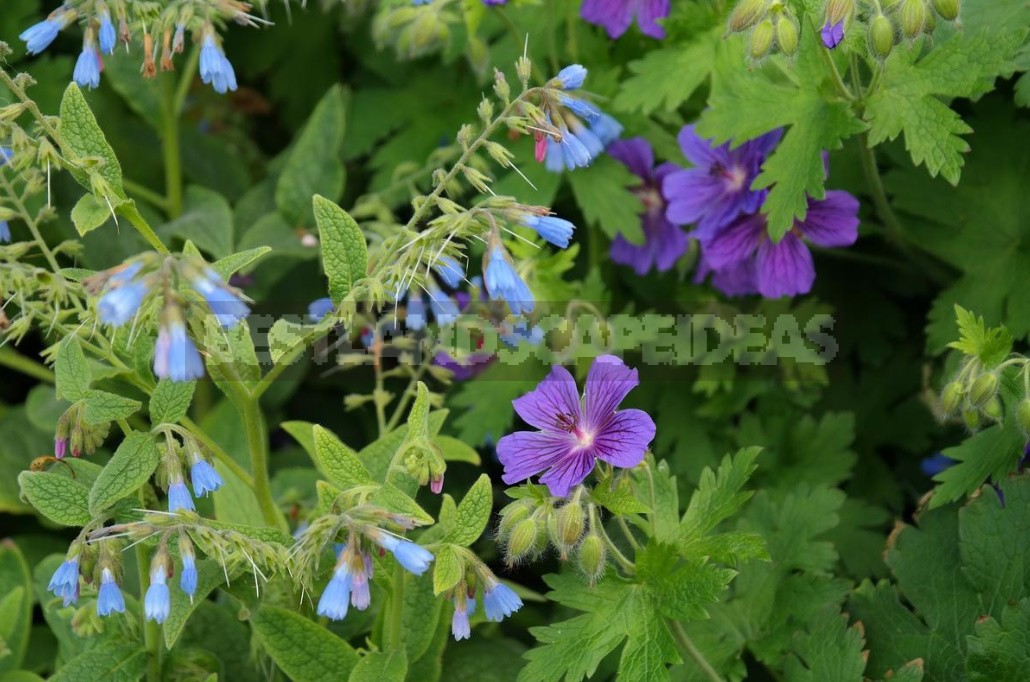
Variegated varieties do not like the bright sun, which burns the light sensitive edges of the leaves.
These plants are used as medicinal, and since the time of the Greeks and Romans, who believed that comfrey (it is unclear which) promotes wound healing and bone fusion. Sýmphytum officinále was even brought to America by immigrants who assumed that such a tool would not be superfluous in the development of new lands. It is also used for other diseases.
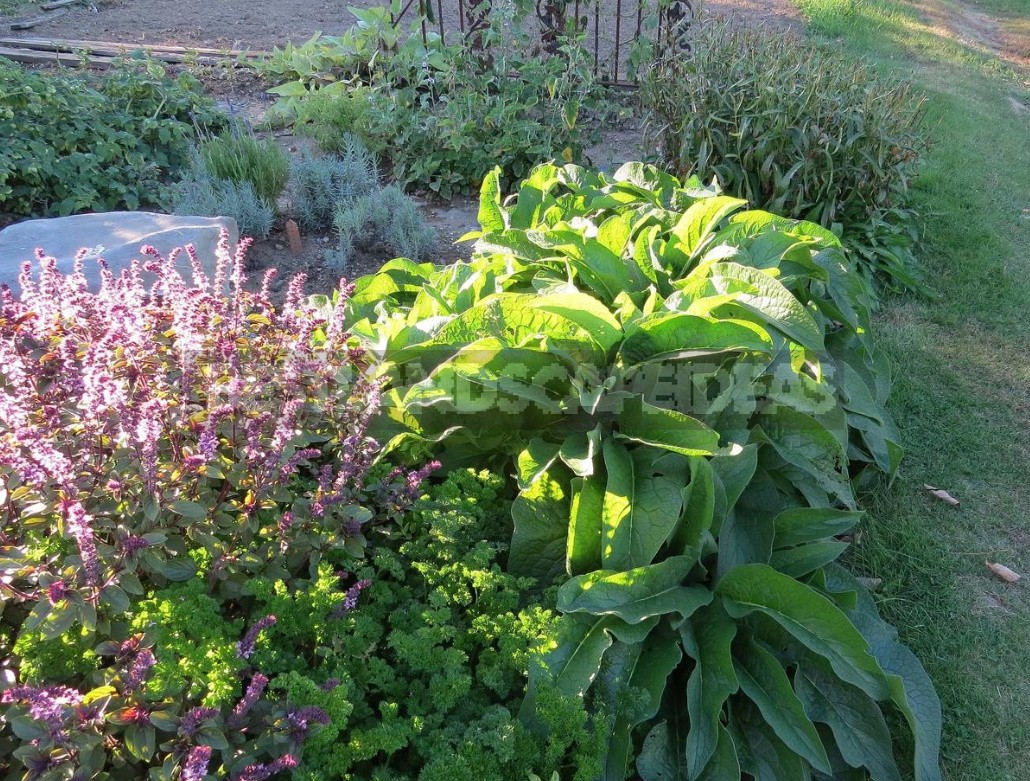
But, as it turned out recently, comfrey contains a certain amount of toxic alkaloids, which can accumulate in the body and have a bad effect on the liver. There are especially many of them in rhizomes and old leaves – that is, parts that are used for treatment. Young leaves are almost harmless, even in the salad put. The most toxic are S. asperum and Symphytum × uplandicum, Sýmphytum officinále is not so dangerous.
